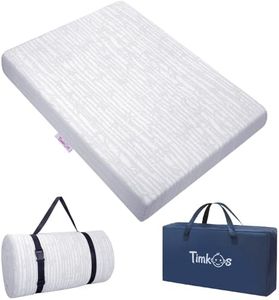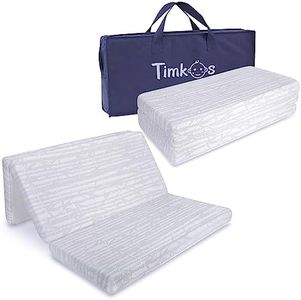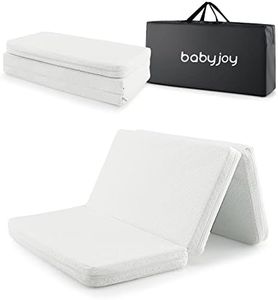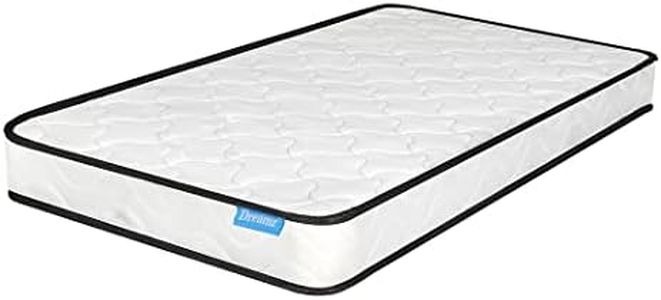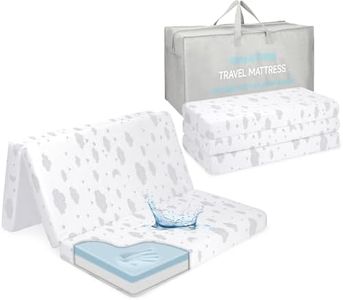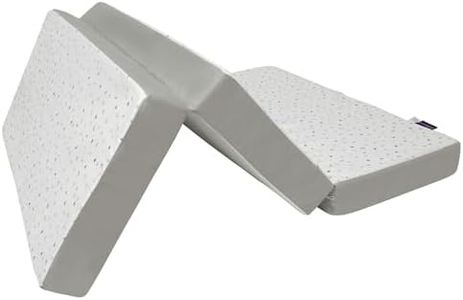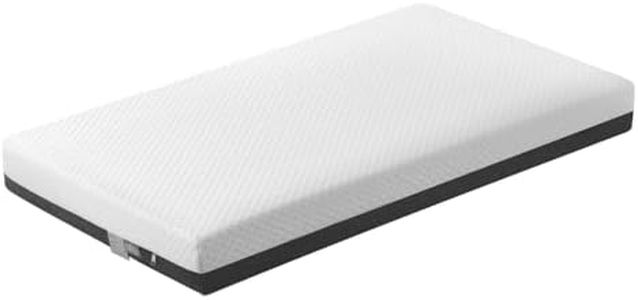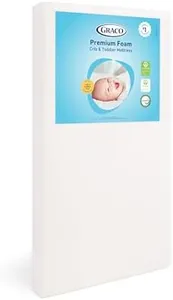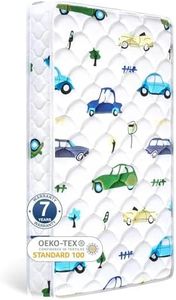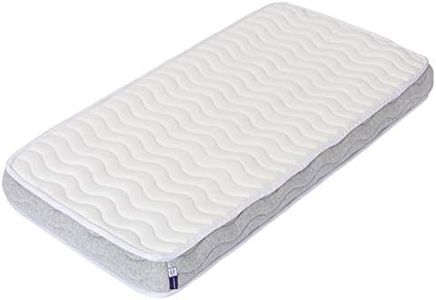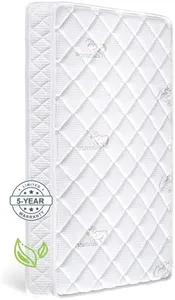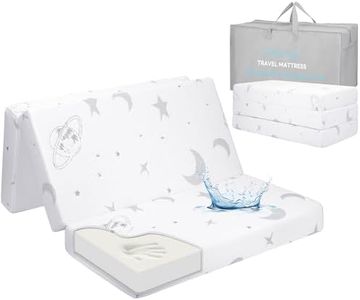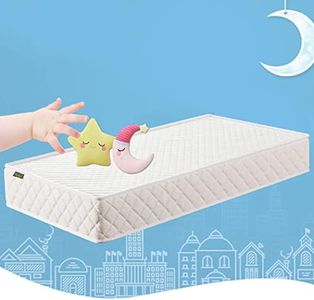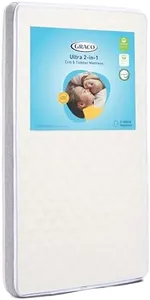We Use CookiesWe use cookies to enhance the security, performance,
functionality and for analytical and promotional activities. By continuing to browse this site you
are agreeing to our privacy policy
10 Best Toddler Bed Mattresses
From leading brands and best sellers available on the web.Buying Guide for the Best Toddler Bed Mattresses
Choosing a toddler bed mattress is an important step as your child moves from a crib. The right mattress can support healthy sleep, provide safety, and ensure comfort. You'll want to look at features that support growth, are easy to care for, and offer durability. It's important to match the mattress to your child’s needs, keep safety in mind, and make sure the mattress fits the bed frame properly.SizeSize refers to the dimensions of the mattress, which are usually standardized for toddler beds. Most toddler mattresses are the same size as a standard crib mattress, typically around 28 inches by 52 inches. This is important because using the correct size ensures the mattress fits snugly in the bed frame, reducing gaps where your child could get trapped. If the mattress is too small for the frame, it’s a safety hazard, while too large won’t fit at all. Always measure your toddler bed and check the mattress size before buying to ensure a safe and comfy fit.
FirmnessFirmness indicates how hard or soft the mattress feels. For toddlers, a firmer mattress is generally recommended, as it supports proper development and reduces risk of suffocation or sinking in too deeply. Soft or plush mattresses may seem cozy but can be unsafe for young children. You’ll often see mattresses labeled specifically as 'firm' for toddlers, while some offer dual-sided options—firmer for infants, slightly softer for toddlers. Choose firmer options for toddlers to support their growing bodies and ensure safety.
Materials and FillingsThis spec covers what the mattress is made of, such as foam, innerspring, or organic materials. Foam mattresses are lightweight and easy to handle, but make sure they're high-density for durability. Innerspring versions include coils for added support and tend to be heavier. Some parents prefer organic materials (like cotton or latex) for natural options with fewer chemicals. Think about allergies, sensitivity to chemicals, and ease of cleaning when deciding. For most toddlers, high-quality foam or innerspring mattresses work well—the choice depends on your comfort preference and values on natural materials.
Waterproofing and CoverWaterproof covers help protect the mattress from accidents, spills, and drool—it’s very useful at the toddler stage. Many toddler mattresses have a waterproof surface or come with a removable, washable cover. This feature is important for hygiene and makes cleaning up after messes much easier. Some covers are quilted for extra comfort; others are made of plastic-like material for total water resistance. If your toddler is still potty training or prone to spills, prioritize a waterproof or easily washable cover.
BreathabilityBreathability measures how well air flows through the mattress, helping keep your child cool and comfortable at night. A breathable mattress can also reduce overheating risks, which is important for young children. Some mattresses use open-cell foams or have vented sides to improve airflow. If your child sleeps warm or you live in a hot climate, picking a mattress with good breathability is especially helpful.
CertificationsCertifications indicate that a mattress meets certain health or safety standards. Examples include CertiPUR-US (for foam mattresses, free from harmful chemicals) or GREENGUARD Gold (low emissions for indoor air quality). These certifications offer peace of mind about chemical exposure for sensitive toddlers. If you value a lower-chemical environment or your child has respiratory issues or allergies, look for recognized safety or environmental certifications.
